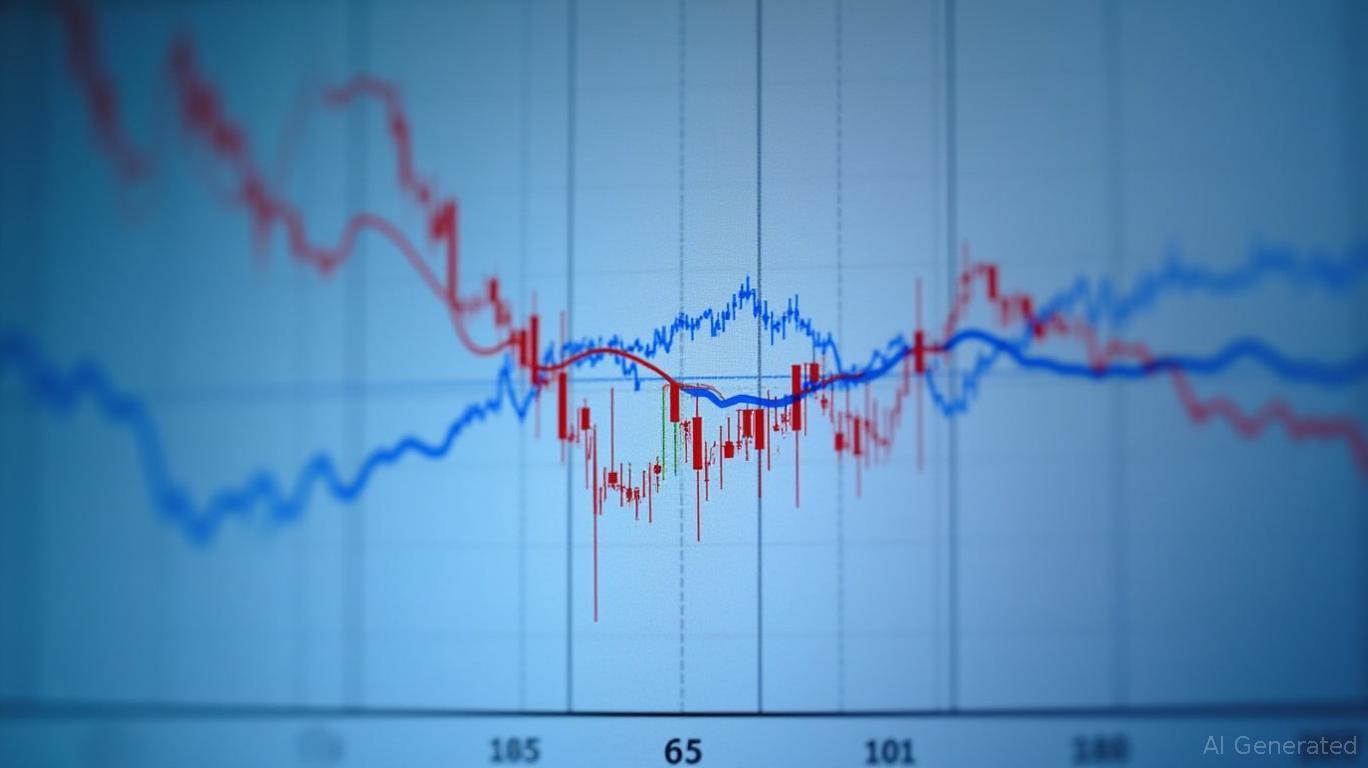Navigating the Fed's Tightrope: Tariffs, Inflation, and Opportunities in Cyclical Sectors
The Federal Reserve's June 2025 decision to hold interest rates steady at 4.25%-4.5% underscores its precarious balancing act between curbing inflation and avoiding an economic slowdown. With trade tariffs intensifying inflationary pressures and political rhetoric escalating, cyclical sectors—those most sensitive to economic cycles like industrials, consumer discretionary, and materials—are facing headwinds. Yet, within this turbulence, strategic investors can identify pockets of resilience and opportunity. Let's dissect the risks and rewards.

The Fed's Dilemma: Stagflation Looms
The Fed's updated projections reveal a worrisome trend: core PCE inflation is expected to average 3.1% in 2025, up from its March forecast of 2.8%, while GDP growth is trimmed to 1.7% from 1.8%. This widening
between inflation and growth points to stagflation, a scenario where high prices stifle demand, squeezing margins and consumer spending. The Fed's “wait-and-see” stance—holding rates to assess the impact of tariffs and labor market data—reflects its uncertainty.Trade tariffs are the primary catalyst. President Trump's policies, including 25% levies on steel and 15% tariffs on Chinese imports, have added $600 million in costs for companies like Procter & Gamble, forcing price hikes or layoffs. The result? Retail sales fell 0.3% in May, with auto and building materials hardest hit.
Cyclical Sectors Under Pressure
Cyclical sectors, which thrive during expansions but falter in downturns, are feeling the pinch:
- Consumer Discretionary:
- JetBlue cut flights and paused cabin upgrades amid weak demand.
- Walmart reported declining traffic, citing “negative consumer sentiment.”
Industrials:
- 3M and Caterpillar face rising input costs, squeezing margins.
Lululemon lowered profit forecasts due to store traffic declines.
Materials:
- Steel producers like Nucor benefit from tariffs but face downstream demand risks.
The Opportunity in Chaos: Where to Look
Despite the risks, cyclical sectors offer selective opportunities:
1. Companies with Pricing Power
Firms that can pass costs to consumers without losing market share may outperform. Consider:
- Coca-Cola: Strong brand loyalty and global scale allow gradual price increases.
- Amazon: Dominance in logistics and pricing flexibility mitigate input cost pressures.
2. Defensive Plays Within Cyclical Sectors
Focus on businesses insulated from tariff volatility:
- Domestic-focused industrials: Waste Management (local waste services) or FedEx (tariff-agnostic logistics).
- Consumer staples with discretionary exposure: Kraft Heinz (essentials with premium lines).
3. Short-Term Trades on Fed Policy Shifts
The Fed's divided “dot plot” hints at a potential rate cut by year-end if unemployment rises. Monitor sectors like financials (which benefit from rate stability) and energy (tariff-driven demand for U.S. oil exports).
4. Avoid Overexposure to Trade-Sensitive Stocks
Steer clear of companies reliant on global supply chains or Chinese imports. Mattel, which withdrew 2025 guidance due to tariff uncertainty, exemplifies this risk.
Political Risks and Investor Caution
President Trump's calls for “rate cuts of 2.5%” and his public clashes with Fed Chair Powell add uncertainty. Investors should:
- Hedge with inflation-protected assets: TIPS bonds or commodities (gold, copper).
- Watch labor data: A rising unemployment rate could force the Fed's hand, easing rate cuts and boosting cyclical sectors.
- Use options: Consider put options on cyclical ETFs (e.g., XLY) to limit downside risk.
Conclusion: Stay Nimble, Stay Selective
The Fed's tightrope walk and tariff-driven stagflation create a challenging environment for cyclical sectors. Yet, by focusing on firms with pricing power, defensive moats, or insulation from trade wars, investors can navigate these risks. Monitor the Fed's next moves closely: a rate cut could spark a cyclical rebound, while persistent inflation may force further retrenchment. For now, avoid overexposure, prioritize quality, and prepare to pivot as data evolves.
Investment advice: Maintain a diversified portfolio with a tilt toward defensive cyclical stocks and inflation hedges. Avoid aggressive bets until clarity emerges on trade policy and inflation trends.

Comments
No comments yet